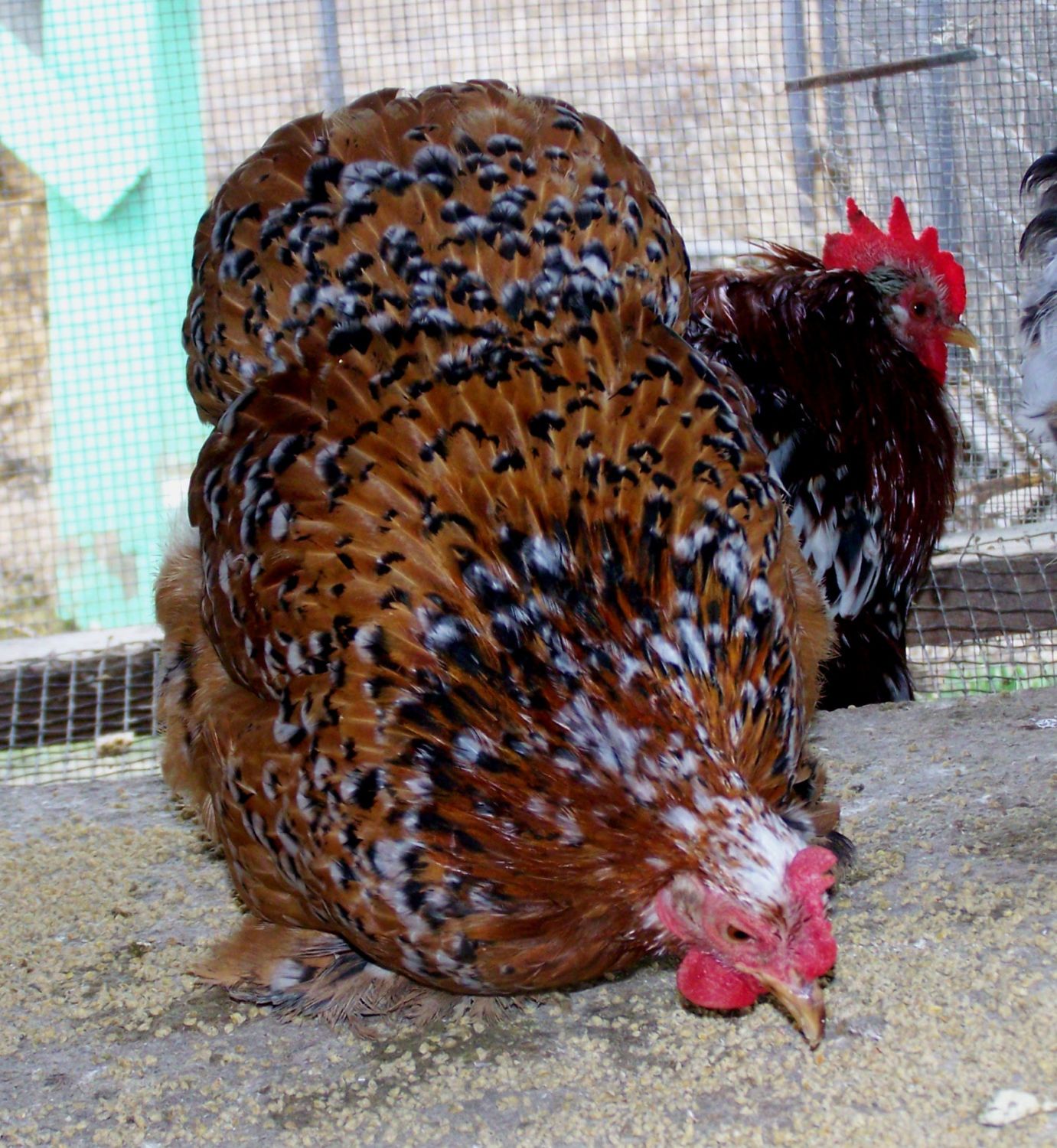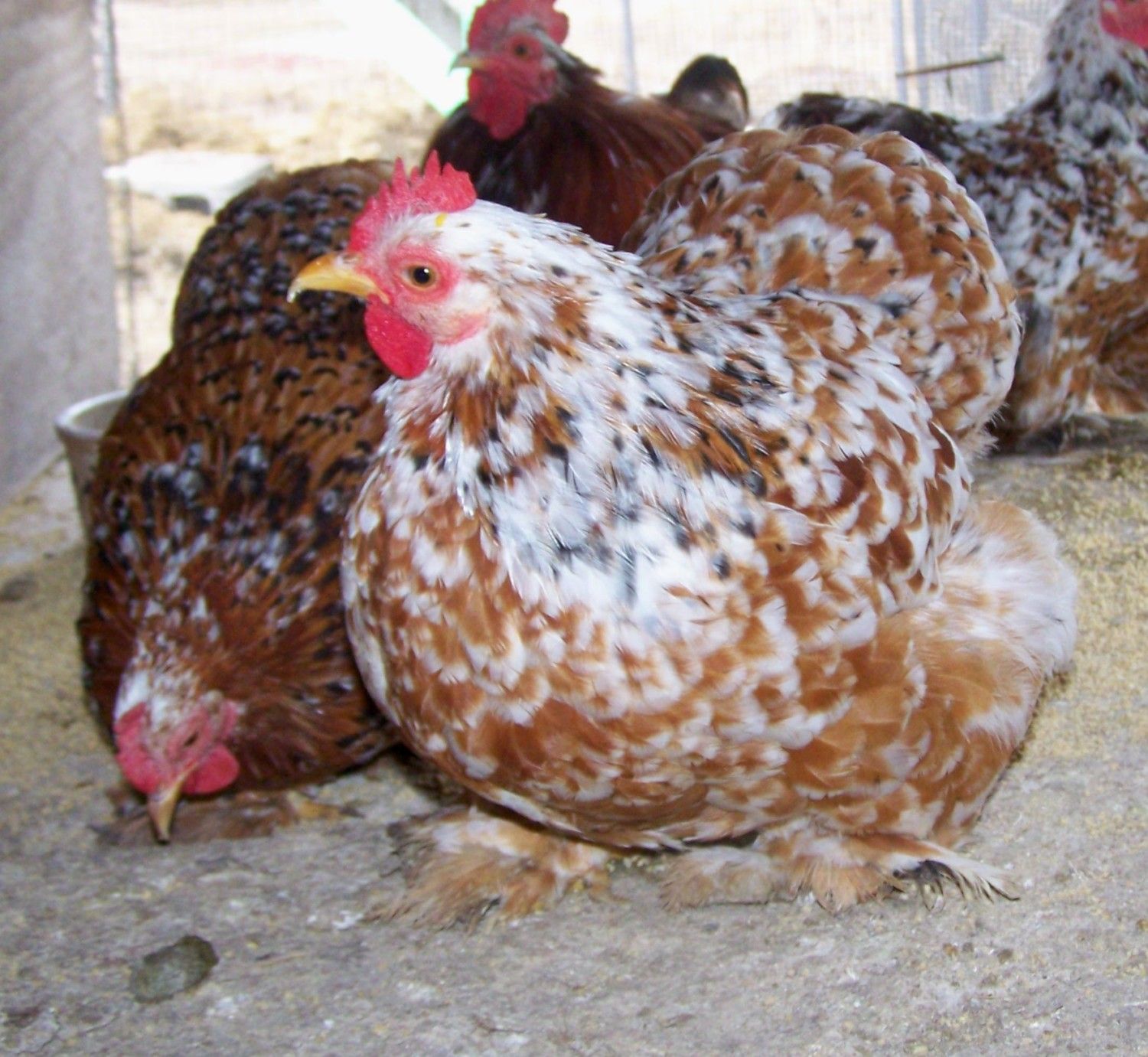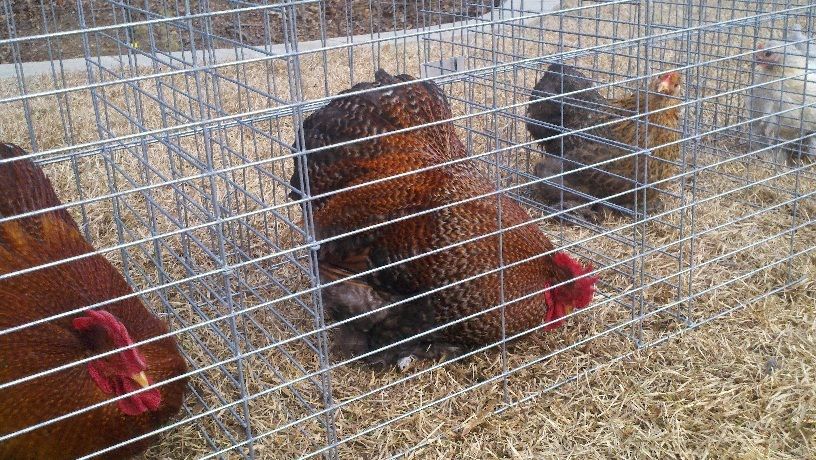The Crele color is no more a "project" color than the GL, SL, Birchen or any of the rest of the lesser know varieties. If you check the feathersite.com you will find many rare varieties on there and a lot of them are well known and commonly bred in the U.K. The Crele color is one of those colors, it is accepted, exhibited and widely bred there.
This is definitely one of those discussions/controversies that is here to stay. As someone whose breeding program is focused on one of the lesser Varieties - Golden Laced (Bantams), I am also guilty of dabbling in Mille Fleur, and have a small Blue Laced Red project. So I guess I can see the many different sides of the issue. But I think we all need to keep in mind the correct status of the different "projects".
The below examples refer to Bantam Cochins only:
1) A Variety is ABA recognized; the Breed also accepts the Variety (i.e. Black, White, Mottled, Brown Red, Golden Laced, etc)
2) A Variety is ABA recognized; the Breed does NOT accept the Variety (i.e. Mille Fleur, Self-Blue, Barred as in Crele, etc)
>There is a written ABA standard for the color to follow when breeding/showing these Varieties, and seeking Breed recognition.
3) A Variety that is NOT ABA recognized, but has a confirmed, definitive genetic makeup, and is often recognized outside the U.S.
(i.e. Tolbunt, etc)
4) A color is NOT ABA recognized (i.e. Calico, Purple Polka Dot, etc)
>There is NO written ABA standard for the color to follow when breeding/showing these Varieties, nor for seeking Breed recognition.
Personally, I don't have any issues with breeding programs that fall into #2 above, as long as they are familiar with the proper ABA written standard for the particular Variety, and their breeding programs have the proper Variety standard as their goal.
#4 is my pet peeve. Breeders start throwing colors together just to see what happens, or have unexpected outcomes from attempting to come up with something different, and simply come up with a name for the offspring that is cute and suits their personal fancy.
There is a rainbow of beautiful Cochins colors out there . . . EVERYONE should have at least one of the lesser accepted Varieties in their breeding programs so we don't lose them forever. Check these out: http://www.cochinsint.com/variety-photos.html
(P.S. - If you are looking for the Variety "Crele" in your ABA Standard, it is not listed under "Crele" - it is listed under "Barred as in Crele".)
Last edited:

 Can't wait to hatch out chicks from these birds.
Can't wait to hatch out chicks from these birds.




